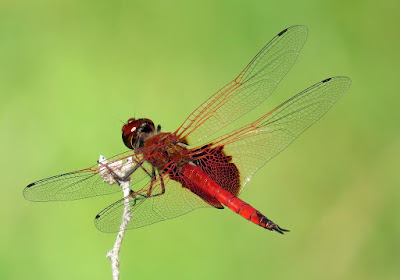An Eastern Spinebill visited one of our Aloes that is profusely flowering at present and spent some time visiting each of the flowering stalks having a sip at each.
Monday, 27 April 2020
Saturday, 25 April 2020
Beautiful Texture
A moth that visited last night spent the day on the side of the house, under the shelter of the verandah.
Beautiful colours and texture enabled me to identify it quite quickly as a Textured Emerald (or Common Brown Looper) moth Hypodoxa muscosaria of the GEOMETRIDAE family.
However to be certain I disturbed it to enable a photo of the underside which has distinctive markings.
After the photo it was quite happy to go its place on the wall for the rest of the day.
This moth has a wingspan of between 30 to 40mm and is found along eastern Australia.
Beautiful colours and texture enabled me to identify it quite quickly as a Textured Emerald (or Common Brown Looper) moth Hypodoxa muscosaria of the GEOMETRIDAE family.
However to be certain I disturbed it to enable a photo of the underside which has distinctive markings.
After the photo it was quite happy to go its place on the wall for the rest of the day.
This moth has a wingspan of between 30 to 40mm and is found along eastern Australia.
Thursday, 16 April 2020
A fuel stop
The number of butterflies around the garden is still high and one species that I see a lot is the Common Grass Yellow, Eurema hecabe but they are fast flyers flitting along close to the ground and not stopping long when they alight.
Today I was lucky to see one land on a flower to tale a sip of nectar before resuming flight and giving me enough time for a photo.
These butterflies are found mainly in the northern areas of Australia with their south eastern range to about the Sydney area.
Wednesday, 15 April 2020
Do not disturb
These little critters are and important part of the environment as they are busy visiting plants to feed on the nectar and at the same time pollinating the plant. They are also very busy finding food for their larvae, caterpillars, aphids and other small insects.
These are one of the paper wasp species, White Faced Brown Paper Wasp Ropalidia plebiana and smaller than their more well known relative Australian Paper Wasp Polistes humilis but their sting is just as painful. Fortunately they are not aggressive and people generally are stung by inadvertently disturbing their nest.
These are one of the paper wasp species, White Faced Brown Paper Wasp Ropalidia plebiana and smaller than their more well known relative Australian Paper Wasp Polistes humilis but their sting is just as painful. Fortunately they are not aggressive and people generally are stung by inadvertently disturbing their nest.
 |
| Australian Paper Wasp Polistes humilis |
Tuesday, 14 April 2020
Not a dune in sight
This is a year for butterflies and dragonflies they are flitting around all day some fats moving others just seem to float with just the occasional flutter of wings.
One very striking dragonfly species that I have not seen before is quite accommodating for photos as it keeps on coming back to the same spot after a short flight. I took a some photos a couple of days ago and was going to post them but couldn't identify the species. I posted on another blog (iNaturalist.org) where there are lots of observers that will usually give you the correct Id and I did get the answer. The following day I manage to get better photos of the Dune Glider Tramea eurybia.
This species if found mainly to the north of Australia in the Andaman Islands, Sumatra, Sulawesi, New Guinea and Fiji. In Australia it is normally found around the dune lakes of Eastern Australia
Saturday, 11 April 2020
Dainty or Dingy
Lots of butterflies still around and today managed to get a photo of one that I see at times but it is not as common as its relative, the Orchard Butterfly.
Looking up references for this species I found two common names one seems appropriate, "Dainty Swallowtail" and I couldn't work out how the other fitted "Little Dingy Swallowtail" given the beautiful colours and markings. It is a member of the PAPILIONIDAE family species named Papilio anactus and it is found throughout Australia where the caterpillars feed on native citrus, finger limes, desert limes, wild orange as well as cultivated citrus.
Like their large relative they are not a problem in the orchard other than on young plants but I just move them to a larger tree.
Wednesday, 1 April 2020
Not a jewel or a fruit
Today's wander around the garden and a couple of insects with colour in their name.
First a dragonfly named for the bright colour of the eyes and some markings although the photo doesn't capture the full brightness. The Australian Emerald Dragonfly Hemicordulia australiae is one of the larger dragonflies and spend most of the time in the air hunting prey.
The eye colour gets brighter as the dragonfly matures and also varys depending on the angle of the reflection of sunlight.
Second is the female Orange Palm Dart ( photos of the male posted previously)
Very different colouring compared to the male but an attractive combination.
Subscribe to:
Posts (Atom)











